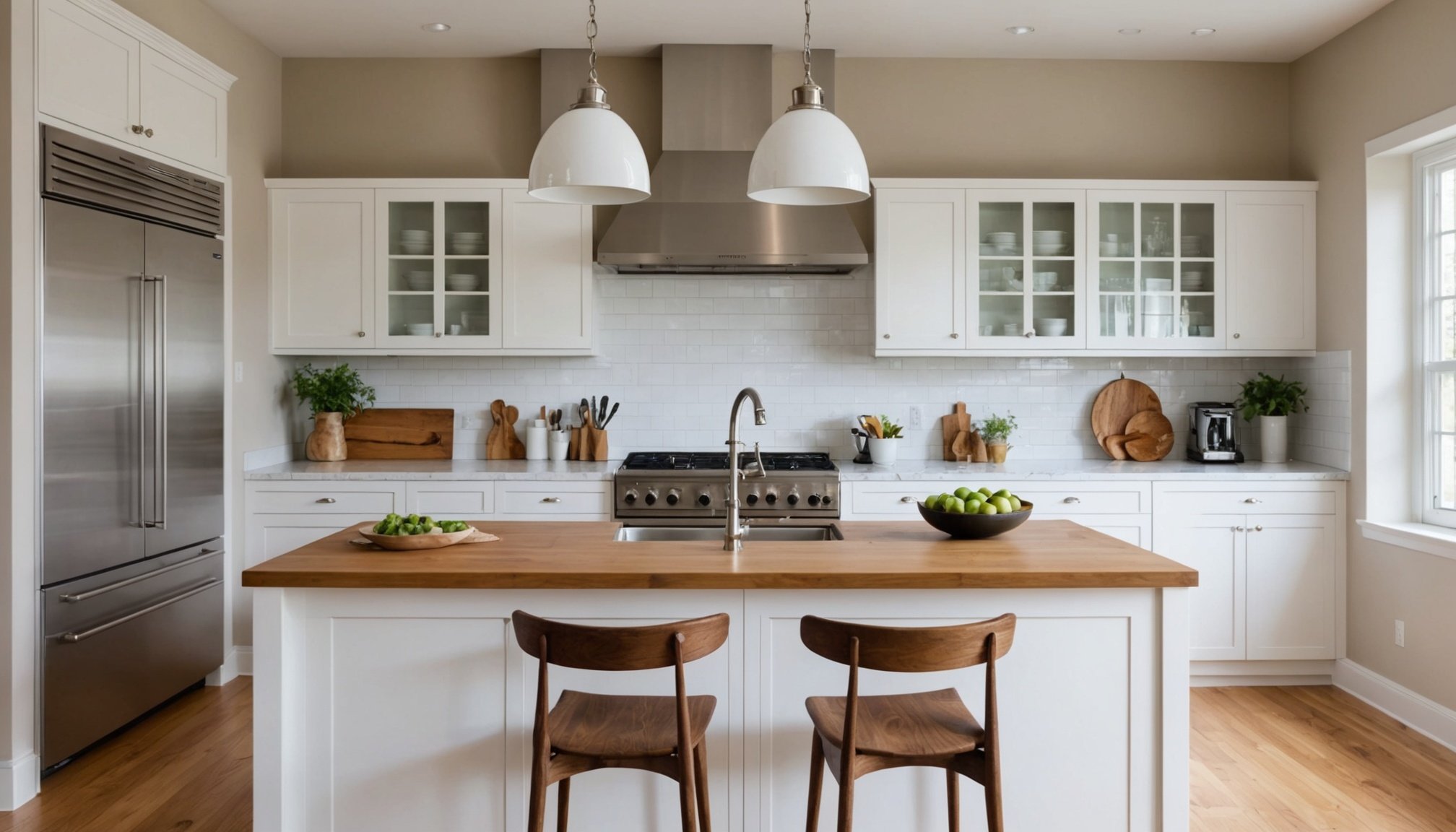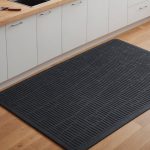Creating a mindful eating environment starts with your kitchen seating. Thoughtful choices can enhance your dining experience, encouraging you to savor every bite and connect with those around you. Explore various seating options that promote comfort and focus. From ergonomic chairs to cozy nooks, the right setup transforms meals into moments of mindfulness. Discover how these selections foster appreciation for food, leading to healthier eating habits and enriched social interactions.
Understanding Mindful Eating
Mindful eating is a practice that encourages individuals to be fully present during meals, focusing on the sensory experience of eating. This involves paying attention to the flavors, textures, and aromas of food, as well as recognizing hunger and fullness cues. The principles of mindful eating emphasize slowing down and savoring each bite, which can lead to a more satisfying and enjoyable eating experience.
Also to discover : Boost Your Hydration Goals: The Ideal Water Dispenser Design for a Diet-Friendly Kitchen
Creating the right environment is crucial for promoting mindful eating. A calm and distraction-free setting allows individuals to concentrate on their meal, enhancing the overall experience. This means turning off electronic devices and setting aside dedicated time for meals.
Psychologically, mindful eating offers numerous benefits. It can reduce stress and anxiety related to food, as individuals learn to listen to their bodies and eat according to their needs. By fostering a positive relationship with food, mindful eating can also help prevent emotional eating and promote healthier dietary habits.
Also to discover : Discover the Top Slow Cooker Model for Crafting Delicious Low-Calorie Soups and Stews!
- Key Benefits of Mindful Eating:
- Improved digestion and nutrient absorption
- Enhanced appreciation of food
- Greater awareness of hunger and fullness signals
By integrating these practices, individuals can transform their approach to eating, leading to a more balanced and fulfilling lifestyle.
The Role of Kitchen Seating in Mindful Eating
Exploring the connection between seating and mindful eating.
Seating and Posture
Kitchen seating plays a crucial role in promoting mindful eating by influencing posture and comfort. A well-designed seating arrangement encourages an upright posture, which aids digestion and enhances the overall eating experience. Comfortable seating allows individuals to relax and focus on the meal, aligning with the principles of mindful eating.
Social Interaction
The impact of seating arrangements extends beyond individual comfort to the dynamics of social interaction. Thoughtful kitchen seating can facilitate conversations and foster a sense of community during meals. This social aspect can enhance meal enjoyment, making the eating environment more engaging and fulfilling.
Meal Enjoyment
The connection between seating and meal enjoyment is significant. A well-planned seating setup can transform the eating environment, making it more inviting. Comfortable and aesthetically pleasing seating encourages diners to savor their meals, aligning with the goals of mindful eating.
- Key Considerations for Kitchen Seating:
- Ergonomic design for comfort
- Arrangement to promote interaction
- Aesthetic appeal to enhance the environment
By focusing on these aspects, individuals can create a kitchen seating environment that supports mindful eating, improving both the physical and social dimensions of meals.
Types of Kitchen Seating
Exploring various styles to enhance your dining space.
Traditional Dining Chairs
Traditional dining chairs offer timeless elegance and versatility, making them a popular choice for many kitchens. These chairs provide excellent support, promoting comfort and encouraging good posture, which aligns with the principles of mindful eating.
Characteristics and Advantages:
- Classic design suitable for various interiors
- High backrest for added support
- Often crafted from durable materials like wood or metal
Recommended Materials:
- Wood for a warm, classic feel
- Upholstered options for added comfort
Ideal Settings:
- Formal dining areas
- Spaces with a classic or rustic theme
Bar Stools
Bar stools are perfect for casual dining experiences, particularly in kitchens with an island or high counter. They encourage a relaxed, social atmosphere, enhancing meal enjoyment.
Characteristics and Advantages:
- Height adjustable options
- Compact, space-saving design
Recommended Materials:
- Metal for industrial look
- Leather for a modern touch
Ideal Settings:
- Open-plan kitchens
- Contemporary dining spaces
Benches and Banquettes
Benches and banquettes offer flexible seating solutions, ideal for maximizing space and fostering a communal dining experience.
Characteristics and Advantages:
- Space-efficient
- Can accommodate more people
Recommended Materials:
- Fabric upholstery for comfort
- Wood for durability
Ideal Settings:
- Cozy breakfast nooks
- Informal dining areas
By selecting the right kitchen seating options, you can enhance both the aesthetic and functional aspects of your dining space.
Factors to Consider When Choosing Kitchen Seating
Selecting the perfect seating involves multiple considerations.
Ergonomics and Comfort Levels
When choosing kitchen seating, prioritizing ergonomics and comfort levels is essential. Comfortable seating enhances the dining experience, promoting mindful eating. Look for chairs with adjustable heights and proper back support to maintain good posture. Ergonomically designed seating can significantly impact how long and comfortably you can sit, directly influencing meal enjoyment.
Space Considerations and Layout
Space considerations are crucial when choosing kitchen seating. Evaluate the available space and layout to ensure your seating fits without overcrowding the area. Compact options like bar stools or benches can be ideal for smaller kitchens, while traditional dining chairs might suit larger spaces. Consider the flow of movement around the kitchen to ensure ease of access and functionality.
Style Cohesion with Kitchen Design
Achieving style cohesion is vital when choosing kitchen seating. The seating should complement the overall kitchen design, whether it’s modern, rustic, or traditional.
- Key Style Cohesion Tips:
- Match materials with existing decor
- Choose colors that blend or contrast tastefully
- Consider the kitchen's theme for consistency
By focusing on these factors, you can select kitchen seating that not only enhances comfort but also aligns with your kitchen's aesthetic and spatial needs.
Material Choices for Kitchen Seating
Exploring the best materials for comfort and style
Wood
Wood is a classic choice for kitchen seating materials due to its durability and timeless appeal. It provides a warm and inviting aesthetic that suits various kitchen styles. However, wood requires regular maintenance to prevent scratches and stains.
Pros:
- Sturdy and long-lasting
- Natural look enhances kitchen aesthetic
Cons:
- Prone to scratches
- Requires polishing
Metal
Metal is favored for its modern and industrial look. It's a durable option that withstands wear and tear, making it ideal for high-traffic areas. Metal seating is often easier to maintain, though it may lack the comfort of other materials.
Pros:
- Highly durable
- Easy to clean
Cons:
- Can be uncomfortable without cushions
- Cold to the touch
Upholstered
Upholstered seating offers superior comfort with its cushioned surfaces. It adds a touch of luxury to the kitchen but can be challenging to maintain due to potential stains and wear.
Pros:
- Comfortable and stylish
- Variety of fabric choices
Cons:
- Requires regular cleaning
- Less durable than wood or metal
Choosing the right kitchen seating materials involves balancing durability, maintenance, and aesthetic appeal to complement your kitchen's design.
Creating a Relaxing Eating Environment
Crafting a serene kitchen ambiance for mindful meals.
Importance of Lighting in the Kitchen
Lighting is a crucial element in establishing a relaxing eating environment. Soft, warm lighting can create a calming atmosphere, encouraging diners to unwind and focus on their meals. Consider using dimmable lights or pendant fixtures to adjust the ambiance according to the time of day and mood. Natural light should be maximized where possible, as it enhances the tranquility of the kitchen ambiance.
Suggestions for Decor That Promotes Relaxation
Thoughtful decor choices can significantly impact the kitchen ambiance. Incorporate elements that evoke calmness, such as plants, which not only purify the air but also add a touch of nature. Neutral color palettes and minimalist designs help reduce visual clutter, contributing to a relaxing eating environment.
- Decor Tips:
- Use natural materials like wood or stone
- Opt for soft, muted colors
- Incorporate greenery for a fresh feel
Tips for Reducing Distractions During Meals
To foster a relaxing eating environment, minimizing distractions is essential. Turn off electronic devices and consider playing soft background music to enhance the kitchen ambiance. Establish a dedicated meal area where focus is solely on the dining experience, promoting mindfulness and relaxation.
Expert Insights on Mindful Eating and Seating
Exploring expert opinions and strategies for enhancing mindful eating through seating.
Expert Testimonials
Nutritionists emphasize the importance of creating a conducive environment for mindful eating. Dr. Jane Smith, a renowned nutritionist, states, "The right seating can significantly impact your eating habits, encouraging you to slow down and savor each bite."
Case Studies
Several case studies highlight the relationship between seating choices and eating behavior. One study conducted by the University of California found that participants who used ergonomic seating reported a 25% increase in mindful eating practices. This suggests that comfortable seating arrangements can enhance the dining experience, promoting healthier eating habits.
Research Findings
Research indicates that seating can influence both posture and focus during meals. A study published in the Journal of Nutrition and Behavior revealed that individuals with supportive seating are more likely to engage in mindful eating. The study concluded that ergonomic seating not only aids digestion but also enhances meal enjoyment.
- Key Findings:
- Ergonomic design boosts mindful eating
- Supportive seating improves posture
- Enhanced focus on meals
These insights underscore the importance of thoughtful seating choices in fostering mindful eating behaviors, ultimately contributing to a more balanced lifestyle.
Tips for Arranging Kitchen Seating
Creating a harmonious and functional dining space.
Best Practices for Conversation
Arranging kitchen seating to facilitate conversation enhances the dining experience. A circular or square layout encourages eye contact and interaction, fostering a sense of community. Consider placing chairs equidistantly to ensure everyone feels included. This setup is particularly effective in smaller spaces, where maximizing interaction is key.
Maximizing Space and Comfort
When optimizing your kitchen seating arrangement, prioritize both space efficiency and comfort. Use benches or stools to save space, allowing for more movement around the kitchen. Ensure that seating is not too close to walls or other furniture, which can restrict comfort. Adjustable seating options can further enhance adaptability in compact areas.
Creating Intimate Dining Experiences
For a cozy and intimate atmosphere, consider arranging kitchen seating in a corner or alcove. This setup can create a private dining nook, perfect for small gatherings or family meals. Use soft lighting and plush cushions to add warmth and comfort, making the space inviting.
- Key Strategies:
- Circular layouts for interaction
- Space-saving seating options
- Intimate nooks with soft lighting
By carefully planning your kitchen seating arrangement, you can cultivate an environment that balances functionality with an inviting ambiance.
Personalizing Your Kitchen Seating
Exploring ways to infuse personal style into your dining space.
Incorporating Personal Style into Seating Choices
Personalizing your kitchen seating allows you to reflect your unique taste and enhance the dining experience. Consider using vibrant colors or patterns for upholstery to add a splash of personality. Mixing and matching different styles can also create a dynamic and inviting atmosphere.
- Customization Ideas:
- Use bold fabrics
- Mix styles and materials
- Add decorative cushions
DIY Options for Unique Seating Solutions
Embrace DIY options to craft unique seating solutions that stand out. Reupholstering old chairs or painting them in fresh colors can breathe new life into your dining area. Building your own benches or stools from reclaimed wood offers a rustic charm and a sense of accomplishment.
Benefits of DIY:
- Cost-effective
- Customizable to fit space
- Sustainable and eco-friendly
Effects of Personalization on Dining Experience
Personalized kitchen seating can significantly enhance your dining experience by creating a more comfortable and appealing environment. When your seating reflects your personal style, it fosters a sense of ownership and pride, making meals more enjoyable.
"The essence of a personalized dining space is the comfort and joy it brings to every meal." – Interior Design Expert
By infusing your personal style into kitchen seating, you create a space that is not only functional but also a true reflection of your individuality.
Conclusion and Final Thoughts
Reflecting on the integration of mindful eating practices and kitchen design.
Evaluating your current kitchen design can significantly enhance your mindful eating practices. Consider how your seating arrangements support these practices, focusing on comfort and ergonomics to promote a relaxed dining experience. Analyzing your kitchen design helps identify areas for improvement, encouraging a more mindful approach to meals.
Experimenting with different seating options can lead to a more engaging and fulfilling dining environment. Whether it's adjusting the layout for better interaction or incorporating ergonomic designs, these changes can enhance your mindful eating practices. Don't hesitate to try new configurations to see what best supports your lifestyle.
- Key Points to Consider:
- Evaluate comfort and ergonomics
- Experiment with layout and style
- Prioritize interaction and relaxation
As you explore these options, remember that the goal is to create a space that aligns with your mindful eating practices while complementing your kitchen design. This thoughtful approach not only improves your dining experience but also fosters a more balanced and fulfilling lifestyle. By integrating these elements, you can transform your kitchen into a haven for mindfulness and enjoyment.











